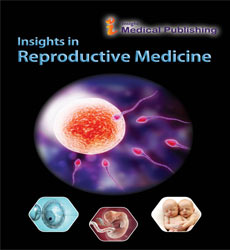A novel and effective stimulation protocol for poor responders undergoing IVF/ICSI
1AarushIVF& Endoscopy Centre , Malad. Mira road
2AarushIVF& Endoscopy Centre , Malad. Mira road
3AarushIVF& Endoscopy Centre , Malad. Mira road
Stimulation in poor responders and ART outcomes in these patients is challenging .It is difficult to obtain a reasonable number of blastocyst embryos in a single cycle of stimulation
Abstract
Objective: To improve ovarian response to stimulation in poor responders, with prestimulation androgenisation,followed by mild stimulation with ClomifeneandHMG sequentially in 2 cyclesand extended culture transfer and compare with traditional antagonist protocol in terms of number of oocytes retrieved,fertilization, cycle cancellation and pregnancy rates.
Methods: 86 patients were divided into 2 arms , one with traditional antagonist protocol and fresh transfer , second with preIVF use of transdermal testosterone gel,followed by2 cycle stimulation with Clomifene and HMGand freeze all embryos . FET was done with blastocysts formed by extended culture after thawing embryos from both cycles .
Results: 86 poor responders were enrolled who met the inclusion criteria. Forty three had standard antagonist protocol stimulation .Standard Protocol: Mean age: 37.30 years; cancellation rate: 56.02%; mean number of MII oocytes retrieved per patient: 1.8; fertilization rate: 33.33%. Only 18 patients had embryo transfers, and two got pregnant. PrecycleANDRO-CC-IVF Protocol: Mean age: 36.7 years; cancellation rate: 7.69%; mean number of MII oocytes: 4.02 and a mean of 1.5 embryos were transferred per patient. Fertilization rate: 72.5%; cumulative pregnancy rate: 41.66%.
Conclusion: Precycle Androgen with Clomifene&HMG all freeze , two cycle stimulation with thawing and Blastocyst extended culture transfer significantly improves the pregnancy rates with reduced treatment costsand should be considered as a first option in poor responders .
Note: This work is partly presented at the Event on International Conference on Gynecology and Obstetrics, August 12-13, 2020 held at Paris, France
Open Access Journals
- Aquaculture & Veterinary Science
- Chemistry & Chemical Sciences
- Clinical Sciences
- Engineering
- General Science
- Genetics & Molecular Biology
- Health Care & Nursing
- Immunology & Microbiology
- Materials Science
- Mathematics & Physics
- Medical Sciences
- Neurology & Psychiatry
- Oncology & Cancer Science
- Pharmaceutical Sciences
